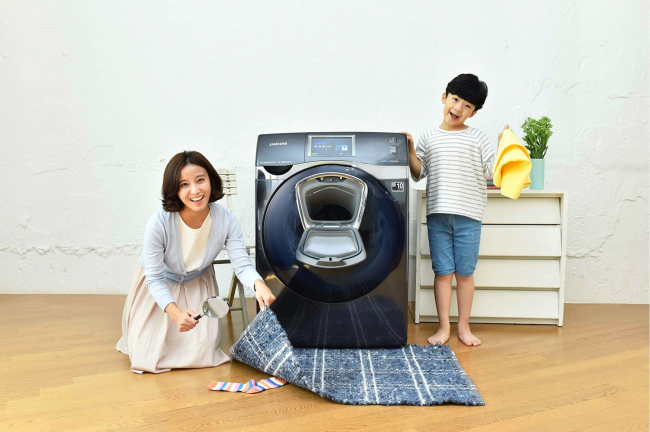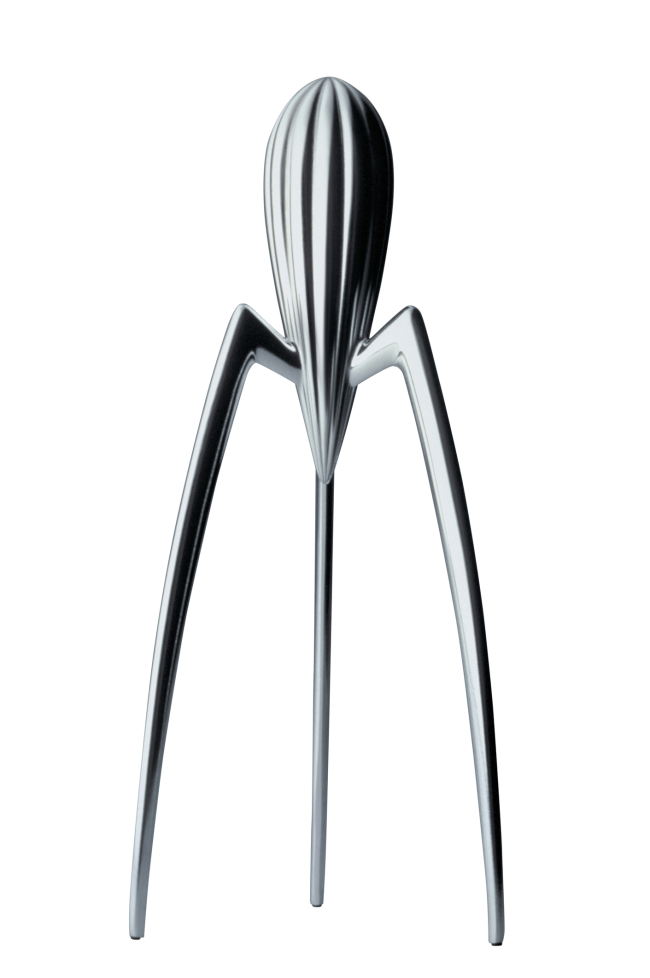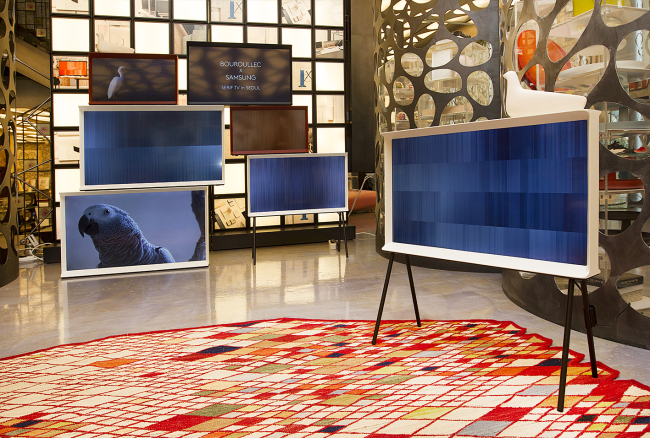When Samsung Electronics launched a washing machine named “Addwash” in September last year, it immediately became a hit with consumers for its unprecedented design: The front-loading washing machine featured a smaller door, in addition to the main door, that could be used to put in additional laundry after the wash cycle had begun.
While Samsung’s Addwash was designed to address a common laundry problem, Alberto Alessi, CEO of Italian houseware brand Alessi designed a spider-like citrus squeezer that could stand on three legs.
Made of cast aluminum, Alessi’s citrus squeezer, named Juicy Salif, was conceived when his colleague, industrial designer Phillippe Starck, was having a pizza.
Alessi said that designers get inspiration for innovative designs from everyday products.
 |
Samsung Electronics’ Samsung AddWash (Samsung Electronics) |
“There are so many wonderful things around us that can inspire designs and add an innovative edge to products in our lives,” said Alessi in an interview with The Korea Herald. He will be speaking about his design philosophy at the Herald Design Forum slated for Nov. 8.
“All we need to do is to open our eyes and look around,” Alessi added.
Famous industrial designer Dick Powell, co-founder and chairman of design and innovation company Seymourpowell, once said that “design innovation starts with humans.” He said that in-depth thinking into what consumers want and what they will need in 5-10 years can spark changes in product designs.
Venturing into unknown products or out-of-the-box designs implies more risks and time to change consumer’s life, according to Powell, who will also take the stage at the Herald Design Forum on Nov. 8.
 |
Alessi’s Juicy Salif citrus squeezer (Herald Design Forum) |
Some products with innovative designs took a while to be recognized.
When Japanese carmaker Toyota released its eco-friendly automobile Prius, it did not receive immediate recognition. However, amid the growing public concern on green consumerism, the fuel-efficient Prius became one of the best-selling cars around the globe, named as the first-mover of the eco-friendly automobile industry.
Local electronics brand LG Electronics’ LG Signature Refrigerator -- better known as Smart Instaview Door-in-Door Fridge -- came about after eight months of trial and error, according to Noh Chang-ho, head of LG’s Design Center.
“No matter how aesthetically perfect the product is, it cannot serve its purpose if the product design cannot portray the product’s essence,” said Noh.
The 21.5-inch touchscreen on the door panel of LG’s Signature Refrigerator displays a calendar, plays music and snaps pictures of food while helping users keep track of expiration dates on the products inside.
 |
LG Signature Refrigerator (LG Electronics) |
In order to ensure that the LED screen on the door panel could withstand the cold air coming from inside the fridge, designers came up with 30 mm front bezel, which engineers at first said was “impossible.”
After a long period of research and development, his team came up with a “refined design which shows the essential values of the product,” Noh says.
After Samsung launched its high-end Serif TV in Europe in September 2015, it entered the US market this summer in collaboration with New York City’s Museum of Modern Arts.
Considered a lifestyle product rather than belonging to the category of existing TVs, it was the first time that the art museum sold television sets.
 |
Toyota’s full hybrid electric mid-size hatchback Prius (Toyota) |
Designed by world-renowned furniture designers Ronan and Erwan Bouroullec, the TV was inspired by the shape of the letter “I” in a serif font. Standing on four retro-style legs to make it look like a piece of furniture, the TV was also recognized for its excellence in design at the iF Design Award 2016 as well as Wallpaper Award 2016.
“Stunning picture quality and crisp sound clarity are what consumers expect from Samsung,” said Dave Das, senior vice president of Samsung Electronics America.
“However, our research also tells us that there is a subset of consumers, largely underserved by the TV manufacturers thus far, who care just as deeply about design and how their TV complements the aesthetics of their home environment,” he added.
 |
Samsung Serif TV (Samsung Electronics) |
“TV manufacturers will no more consider its thickness or size, but will view it as a product of lifestyle to change and lead the consumer’s lifestyle,” said Kim Mun-soo, vice president at Samsung Electronics’ video display division.
By Kim Da-sol (
ddd@heraldcorp.com)











![[Today’s K-pop] Blackpink’s Jennie, Lisa invited to Coachella as solo acts](http://res.heraldm.com/phpwas/restmb_idxmake.php?idx=644&simg=/content/image/2024/11/21/20241121050099_0.jpg)
